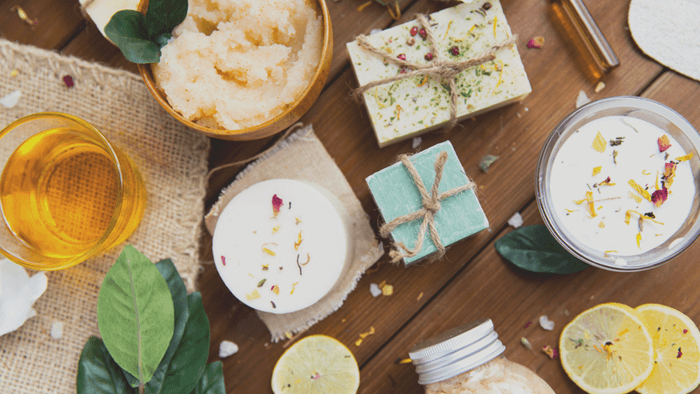
05 Apr Vegan Cosmetics Anyone?
If you’re sensitive to natural health and eating well, you’ve probably heard of the ‘vegan’ trend that is in full swing. Veganism has come a long way—once reserved for peace-loving hippies, interest in a totally animal-free diet is at an all-time high. The no-meat-eggs-or-dairy trend is also making its way into the cosmetics industry, and for good reason too! After all the industry has not always been so kind to animal friends!
So What Exactly Counts as ‘Vegan’ Cosmetics?
One immediately thinks of cruelty-free products. And while it is true that a vegan cosmetic product is one that is not tested on animals, it doesn’t stop here. Up until now, there is no official definition of what a vegan beauty product actually is, however we can list a series of criteria which it must meet:
- The cosmetic formulae must not contain any animal ingredients. This means saying goodbye to carmine red in lipsticks as they are produced from the crushed scales of insects!
- The cosmetic product should not contain any ingredients derived by an animal. This also means saying farewell to honey and precious donkey milk!
- A vegan product’s ingredients have not been tested on animals.
- A vegan cosmetic should be certified ‘Vegan’ by a specific label, however this is not mandatory.
How To Identity A Vegan Product?
If you want to recognise a vegan cosmetic, here is a tip—read the list of ingredients first! Generally, they can be found on the packaging of the product and unfortunately tend to be printed in very small lettering. Nonetheless, one should read them carefully and thoroughly!
We’ve provided you with a list of terms that designate ingredients of animal origin. You must avoid them if you are looking to buy a vegan cosmetic product!
- Mel: Honey, generally in balms and some shower gels
- Beeswax or Cera alba: Beeswax
- Lake, Lactis or Whey Protein: Animal milks found in moisturising creams or soaps
- Sodium Tallowate: Saponified bovine tallow, generally found in soaps of major brands
- Carmine Red, I. 75470 or E120: Carmine red
- Lanolin(e): Emollient derived from wool, generally found in moisturising creams
- Squalane, Collagen or Chitosan: Moisturising ingredients often derived from marine animals
- Mink Oil: The well-known mink oil
If you are faced with a cosmetic oil/product that only contains fat, then you need to be sure that it is of plant origin. This is easy as a ‘100% vegetable cosmetic ingredient’ is almost always referred to by its Latin name – Argania spinosa for argan, Prunus dulcis for almond, etc.
Here’s a DIY Vegan Cosmetic Recipe
If you want to prepare a vegan beauty treatment to moisturise your body and face, then here’s an extremely easy recipe to make!
You will need:
- A 100ml jar
- Aloe vera gel
- Almond or olive oil
- Lavender essential oil
- Corn-starch
Pour 8 tablespoons of pure aloe vera gel (make sure it’s of a good quality!) into a clean and disinfected 100ml jar. Add in 2 tablespoons of either almond or olive oil followed by 20 drops of real lavender essential oil. If you do not have any, you can substitute it with vanilla extract straight from your kitchen. Then, add a pinch of fine corn-starch as this will better bind the mixture. Once you are done, seal the jar and shake it for at least 3 minutes. You will be left with a light creamy mixture, which you can then use as a moisturiser for your skin!
